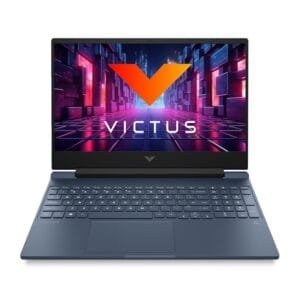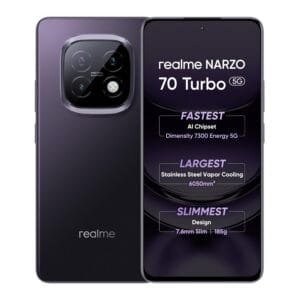
Finding the best Rainbow Six Siege X settings is tricky, especially compared to other competitive shooters with much more basic graphical settings on offer. It can get overwhelming pretty quickly, but following our guide will help take the stress out of getting your in-game frame rate maximized.
The Rainbow Six Siege X system requirements are a step up from the original release, but that was to be expected. You still won’t need the best gaming PC in order to run Rainbow Six Siege X, but if you’re targeting high frame rates or resolutions like 4K, then it couldn’t hurt to explore some upgrades.
Best Rainbow Six Siege X settings for PC
- Refresh Rate: Match Monitor
- VSync: Off
- Field of View: 90
- Nvidia Reflec Low Latency: On + Boost (If compatible)
- Texture Quality: Very High
- Texture VRAM Limit: Normal
- Texture Filtering: Anisotropic 16X
- LOD Quality: Ultra+
- Shading Quality: High
- Shadow Quality: Very High
- Reflection Quality: High
- VFX Quality: Ultra+
- Ambient Occlusion: SSBC+
- Lens Flare: Bloom + Lens Flare
- Zoom-In Depth of Field: On
- Nvidia DLSS: Off
- AMD FSR 1.0: Off
- AMD FSR 2.0: Off
- Anti-Aliasing: T-AA
- Adaptive Render Scaling Target fps: 0
- Render Scaling: 100
- T-AA Sharpness: 50
The above settings on our RTX 4070 testing rig (full specs under How We Test) netted us an average frame rate of 142fps, with a solid 1% low of 82fps. This is ideal for a competitive shooter, as you not only want a high average number, but you want the 1% low to sit as far north of 60fps as possible. This way, even when you do encounter potential drops or stutters, they are less noticeable.
It’s worth remembering that if you want to ensure the best performance possible, you want to keep any form of upscaling turned off and instead pick the best settings for native performance. Using upscaling can create ghosting, causing image distortion, which isn’t ideal in a game where you want complete accuracy.
Best Rainbow Six Siege X settings for Steam Deck
Rainbow Six Siege X is not currently playable on the Steam Deck due to the implementation of an anti-cheat that is not compatible with Linux. This means that if you want to play Siege X on a Steam Deck, you’ll need to boot Windows on your handheld.
Other handhelds like the ROG Ally X, MSI Claw, and Lenovo Legion Go are not impacted by this and can run Siege X with no issues. If you are going to persist and boot Windows on your Steam Deck, you’ll want to stick to the Low graphical preset and avoid using AMD FSR to get the best performance possible without impacting your image quality by aggressively upscaling the game.
Rainbow Six Siege X has native controller support, so the game is playable in handheld mode across all the various Windows portables on the market.
Rainbow Six Siege X graphics presets
- Low
- Medium
- High
- Very High
- Ultra
- Ultra+
There are plenty of preset graphics profiles in Rainbow Six Siege X if you want to take a bit of a shortcut to finding decent performance. The caveat, however, is that there are so many settings that picking a default and hoping for the best isn’t how you’re going to get the best balance between visuals and frame rate.
There is a considerable difference between the Low and Ultra+ profiles, with our frame rate doubling as we moved down through the presets. There was also a noticeable jump in visual quality between High and Medium, which signifies this could be a good starting point for those with weaker or older gaming PCs.
Siege X also includes a VRAM slider in the settings menu, so you can see exactly how much VRAM is needed for each preset and how each setting impacts your VRAM usage as it’s toggled.
Rainbow Six Siege X accessibility settings
There are a few accessibility settings you can adjust in Rainbow Six Siege X, mainly surrounding colorblindness. These include making changes to the outline of friendly and enemy players, as well as the color of your weapon optics.
There are also some other visual/audio changes you can make regarding the effects of stun grenades, which can help you if you have tinnitus or are sensitive to bright, white lights. Key rebinding is also available, as are subtitles.
How we tested Rainbow Six Siege X
At PCGamesN, we use dedicated gaming rigs to test the best settings for performance and gameplay in the latest releases. The test rig used to play Rainbow Six Siege X includes the following components: Intel Core i7-11700F, Nvidia GeForce RTX 4070 12GB, 32GB of DDR4 3,200MHz RAM in a dual-channel configuration, and MSI B560 motherboard. We also test using Windows 11 64-bit.
We always run our testing first at 1,920 x 1,080 to identify the best settings for this entry-level resolution, then again at 2,560 x 1,440 using the same setup to gauge the difference in performance. We use CapFrameX to capture frame data and compare testing sessions.
Does Rainbow Six Siege X need an SSD?
Rainbow Six Siege X does not require an SSD, regardless of whether you’re aiming for the minimum or recommended system requirements.
Upgrading to one of the best gaming SSD options, however, will really help keep game loading times in check and get you into the action quicker.
How to monitor performance in Rainbow Six Siege X
If you want to keep an eye on performance in Rainbow Six Siege X, we have an easy method that works whether you’re using an Nvidia or AMD graphics card.
For Nvidia cards, ensure you have the Nvidia App installed and the in-game overlay enabled, and then hit ALT + R in-game to bring up your performance monitor. With AMD cards, you can enable performance monitoring via the Radeon overlay using the shortcut CTRL + SHIFT + O.
Alternatively, you can download free software such as CapFrameX or Nvidia FrameView, to get a cleaner, more simplified benchmarking tool that works with any graphics card.
With handheld gaming PCs, most will have a dedicated button to access a quick menu from which performance monitoring, sometimes called real-time monitoring, can be accessed.
You can follow us on Google News for daily PC games news, reviews, and guides. We’ve also got a vibrant community Discord server, where you can chat about this story with members of the team and fellow readers.



